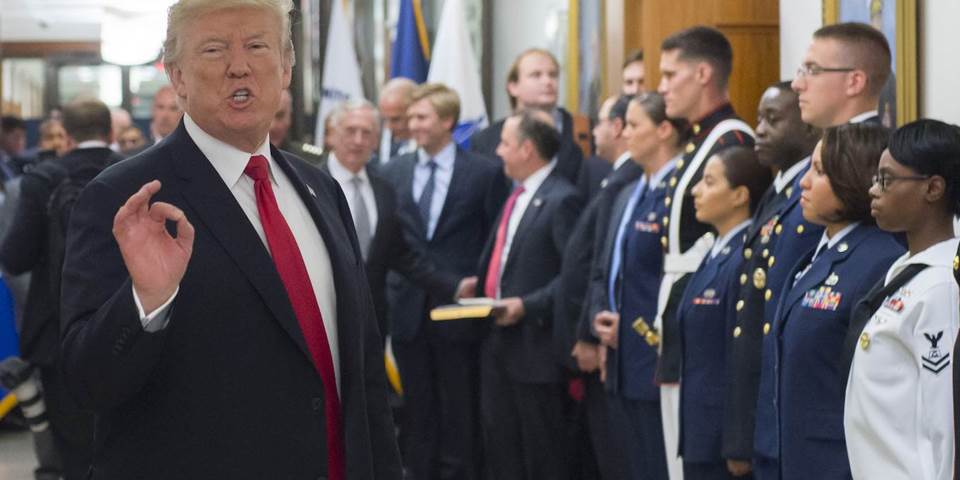Javier Solana

MUNICH – Multipolarity is back, and with it strategic rivalry among the great powers. The re-emergence of China and the return of Russia to the forefront of global politics are two of the most salient international dynamics of the century thus far. During Donald Trump’s first year in the White House, the tension between the United States and these two countries increased markedly. As the US domestic political environment has deteriorated, so, too, have America’s relations with those that are perceived as its principal adversaries.
When China’s President Xi Jinping rose to power just over five years ago, he presented the idea of a “new type of great power relations” based on cooperation and dialogue, as well as respect for one another’s national interests. But China does not always live by what it preaches as far as cooperation is concerned, as its unilateralism in the South China Sea indicates. Likewise, the relative loss of influence of the Chinese diplomatic corps contrasts with the emerging symbiosis between Xi and the People’s Liberation Army. Xi has even shown a surprising predisposition to wear a military uniform.
Russia, for its part, has invaded two former Soviet republics in the last decade, and its military spending as a share of GDP has been increasing almost exponentially. On top of this, the US and Russia have accused each other of violating the Intermediate-Range Nuclear Forces Treaty, the only Cold War-era agreement on armaments between the two countries that remains in force.
While it makes sense to recognize the current challenges, we should refrain from exaggerating them. In the past few months, the US administration has published three important documents: the National Security Strategy, the National Defense Strategy, and the Nuclear Posture Review. In all of them, China and Russia are explicitly identified as serious threats to the international order. But the principal threat to the US today does not come from China or Russia; it comes from the confusion characterizing its own policies, owing to Trump’s rejection of the very international order that the US helped forge and defend for decades.
It is worth remembering that when Trump tries to intimidate North Korean leader Kim Jong-un by boasting of US military power, the facts are – for once – on his side. US military spending is by far the world’s highest, almost three times that of second-place China, and almost nine times that of third-place Russia. Indeed, the US spends more on defense than the following eight countries combined, and possesses the world’s most sophisticated nuclear arsenal. But, despite the Trump administration’s frequent (and often ungraceful) declarations of military superiority, its actions imply that this superiority is not enough.
The Nuclear Posture Review is the best example of this cognitive dissonance. The new US doctrine stipulates an increase in the number of tactical nuclear arms with relatively small explosive potential. The objective of this measure is to neutralize Russian capacities in this field, thus “denying potential adversaries any mistaken confidence that limited nuclear employment can provide a useful advantage over the United States and its allies.” But if the confidence is indeed mistaken, why respond as if it were not?
In contrast to the Pentagon’s view, the costly development of more tactical arms would in fact lower the threshold for nuclear conflict. And, as Brookings expert Robert Einhorn explains, the Nuclear Posture Review includes another doctrinal provision with a similar effect: the statement that the US could use nuclear arms in response to “non-nuclear strategic attacks” that are only ambiguously defined.
To lower the nuclear threshold increases the risk of a global catastrophe, a risk that the Bulletin of the Atomic Scientists currently places at its highest level since 1953. Even in the highly improbable event that an uncontrolled escalation could be avoided after “a limited nuclear employment,” one tactical weapon alone could generate an explosion comparable to those that destroyed Hiroshima and Nagasaki.
Nine years after Barack Obama’s famous speech in Prague, in which he committed to seeking a world free of nuclear weapons, disarmament has ceased to be a strategic priority for the US (which, as the world’s biggest power, should lead efforts in this area). Obama’s Nobel Peace Prize now seems a relic from the past, and the one awarded to the International Campaign to Abolish Nuclear Weapons last year has a sad, anachronistic ring to it. A new arms race, for which Trump has expressed his support, appears to be underway, though for now it may focus more on perfecting arsenals than on increasing their total size.
Moreover, the Trump administration has just presented a budget proposal that would increase military spending, while cutting funds for the State Department by 25%. Although congressional support for the proposal is weak, Trump’s budget is yet another symptom of his aversion to diplomatic channels. This is one of the causes of the notable degradation of America’s international image, a trend that doesn’t seem to trouble the current administration much.
What really worries the Trump administration – aside from Iran and North Korea – is the strategic competition represented by Russia and, above all, by China. But, given mounting Russian and Chinese militarization, it is critical to avoid adding fuel to the fire. A great-power conflict is not inevitable – unless these powers act as if it were.
What should alarm the US most is not the multipolarity that has been evolving throughout this century. Rather, the greatest risk to the US is that it could forget the principles and institutions that have shored up its global leadership. If the Trump administration continues emphasizing a narrative of confrontation, it could end up creating a self-fulfilling prophecy.
Javier Solana was EU High Representative for Foreign and Security Policy, Secretary-General of NATO, and Foreign Minister of Spain. He is currently President of the ESADE Center for Global Economy and Geopolitics, Distinguished Fellow at the Brookings Institution, and a member of the World Economic Forum’s Global Agenda Council on Europe.
0 comments:
Publicar un comentario